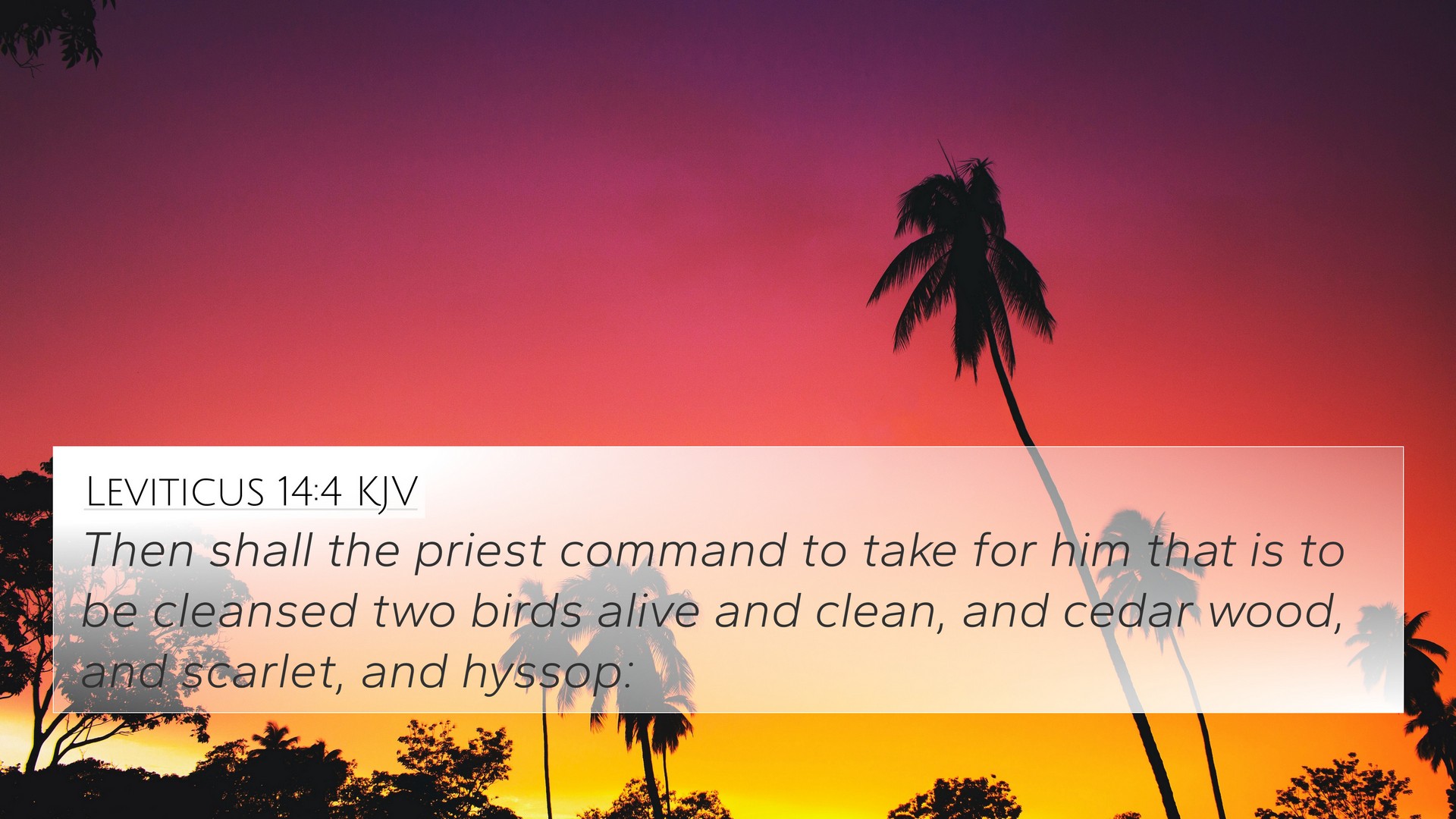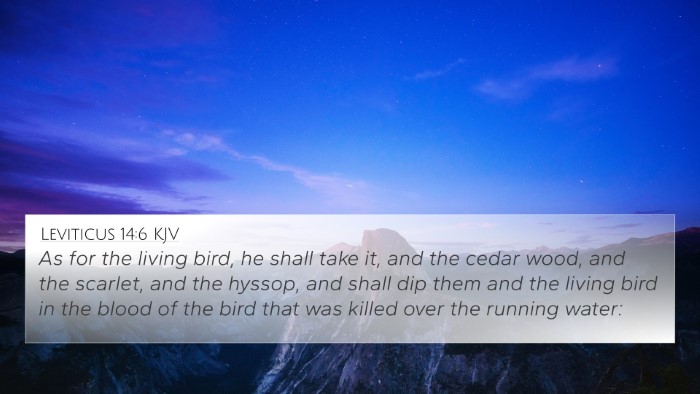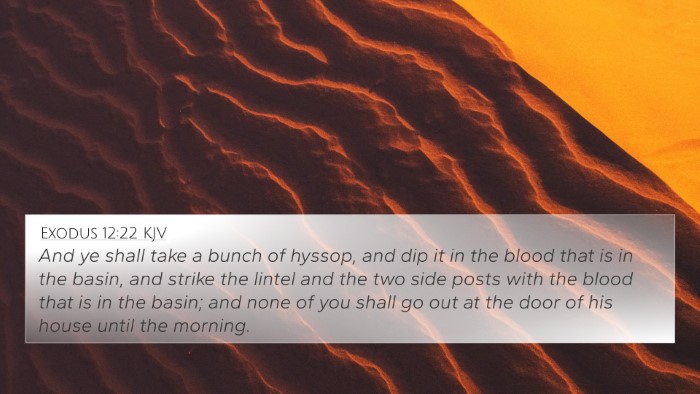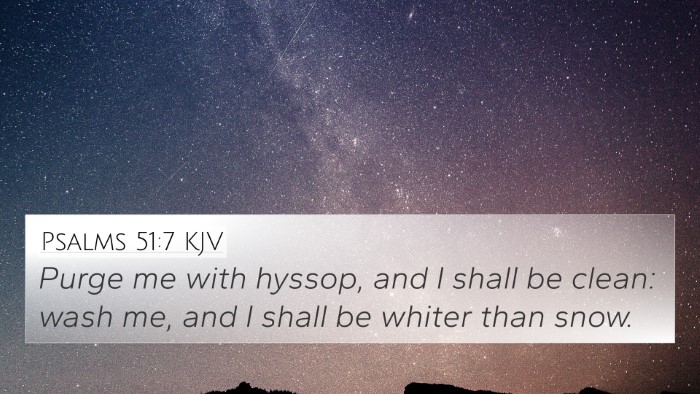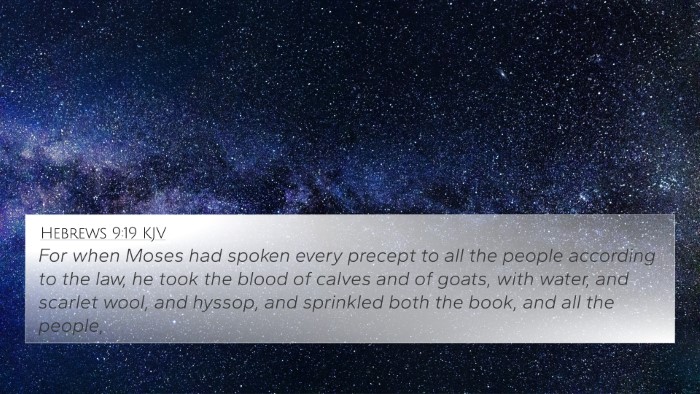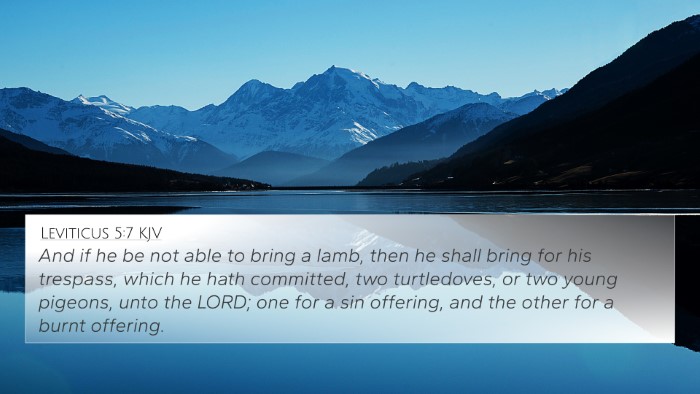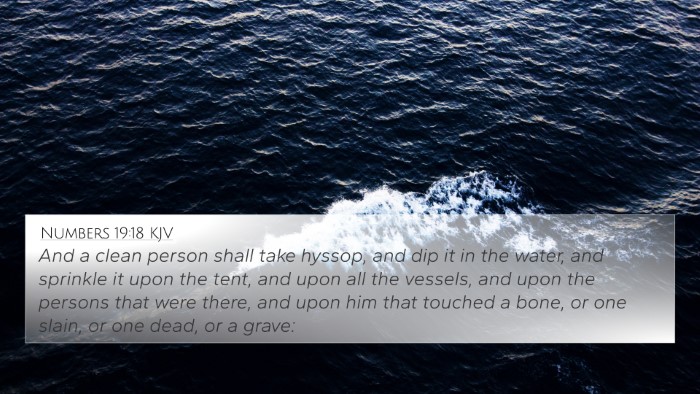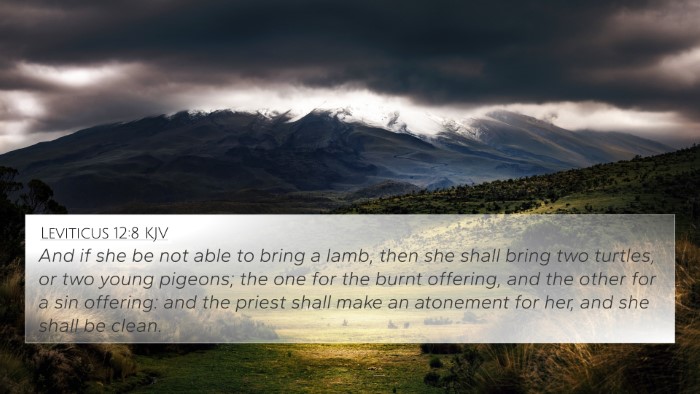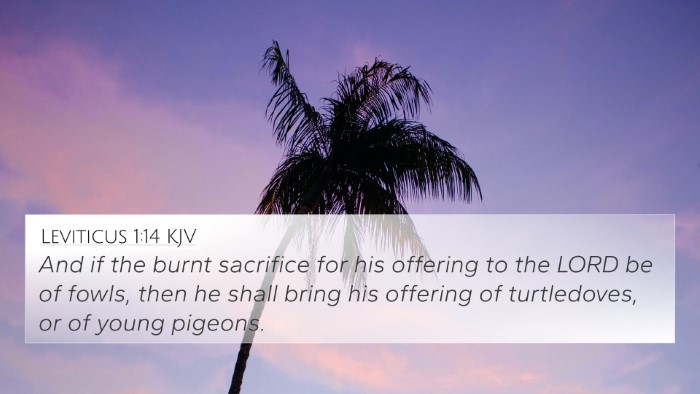Understanding Leviticus 14:4
Leviticus 14:4 states:
"Then shall the priest command to take for him that is to be cleansed two birds alive and clean, and cedar wood, and scarlet, and hyssop."
Context and Significance
This verse is part of the ceremonial laws given to the Israelites regarding the cleansing of a person healed of leprosy. It outlines specific rituals that the priest must perform, emphasizing the importance of purity and the role of the priest in mediating between God and the people.
Analysis from Public Domain Commentaries
Matthew Henry's Commentary:
Matthew Henry emphasizes the ritualistic nature of the instructions given in Leviticus 14:4. He notes that the use of two birds symbolizes the dual aspects of salvation—one bird as a sacrifice and the other as a means of returning to a state of purity. This act represents not just physical healing, but the deeper spiritual renewal that begins with forgiveness and cleansing from sin.
Albert Barnes' Commentary:
Albert Barnes explains the significance of the materials involved in the cleansing process. The cedar wood represents strength and longevity, while the scarlet and hyssop could symbolize cleansing and purification. Barnes highlights that these elements foreshadow the ultimate sacrifice of Christ, linking the Old Testament rituals to future New Testament revelations.
Adam Clarke's Commentary:
Adam Clarke offers a detailed examination of the symbolic nature of the elements mentioned in this verse. He suggests that the cedar wood is a representation of the cross, the scarlet thread as representing the blood of Christ, and hyssop symbolizes the act of purification that the death of Christ would ultimately accomplish for believers. Clarke points out that this ritual is a precursor to the Christian understanding of atonement and redemption.
Bible Verse Cross-References
This verse is rich in thematic connections and parallels with other scriptural texts. Here are some relevant cross-references:
- Leviticus 14:2 - Outlines the laws of cleansing a leper.
- Hebrews 9:22 - "Without the shedding of blood, there is no remission."
- 1 Peter 1:19 - The blood of Christ is likened to that of a lamb without blemish.
- Matthew 8:2-4 - Jesus heals a leper and instructs him to offer the prescribed gifts.
- Numbers 19:6 - Usage of hyssop in the purification rituals involving the red heifer.
- Psalm 51:7 - "Purge me with hyssop, and I shall be clean."
- Revelation 7:14 - The reference to washing robes in the blood of the Lamb.
Thematic Bible Verse Connections
The cleansing rituals found in Leviticus connect deeply with New Testament themes of redemption and purity through Christ. The practices described highlight not only the physical aspects of cleansing but also spiritual implications that resonate through the Bible.
Comparative Bible Verse Analysis
In analyzing scripture, it's essential to identify how similar themes are expressed across different texts:
- Sanctification: Leviticus 14:4 connects with James 4:8, which encourages believers to draw near to God in purity.
- Healing and Forgiveness: Isaiah 53:5 discusses how the suffering servant bears our transgressions, resonating with the intent of the rituals.
- Separation and Holiness: 2 Corinthians 6:17 relates to the call for believers to be separate and cleansed.
Inter-Biblical Dialogue
Leviticus 14:4 opens a dialog between the Old and New Testaments, where the Old Testament's ritual laws point towards the New Testament's fulfillment in Christ.
Tools for Bible Cross-Referencing
For deeper study, various tools can assist in exploring the connections further:
- Bible concordance for locating themes and specific terms.
- Cross-reference Bible study guides to trace thematic links.
- Bible chain references to follow a narrative through scripture.
Conclusion
Leviticus 14:4 presents a rich tapestry for study, encouraging believers to delve into both the historical context of the cleansing rituals and their fulfillment in Christ. Understanding its meaning requires careful examination of its connections and implications throughout the Bible, enhancing our appreciation for the overarching narrative of Scripture.
